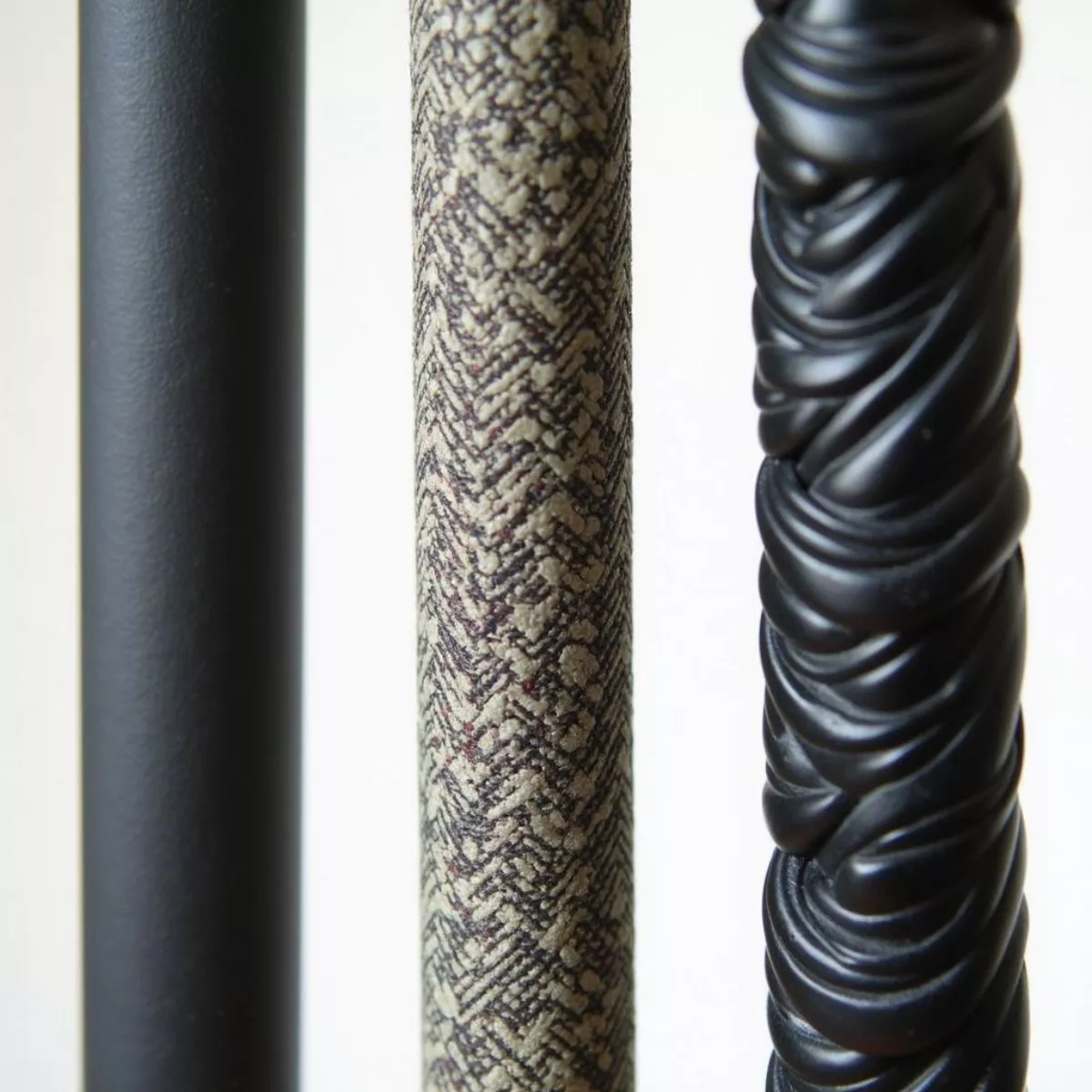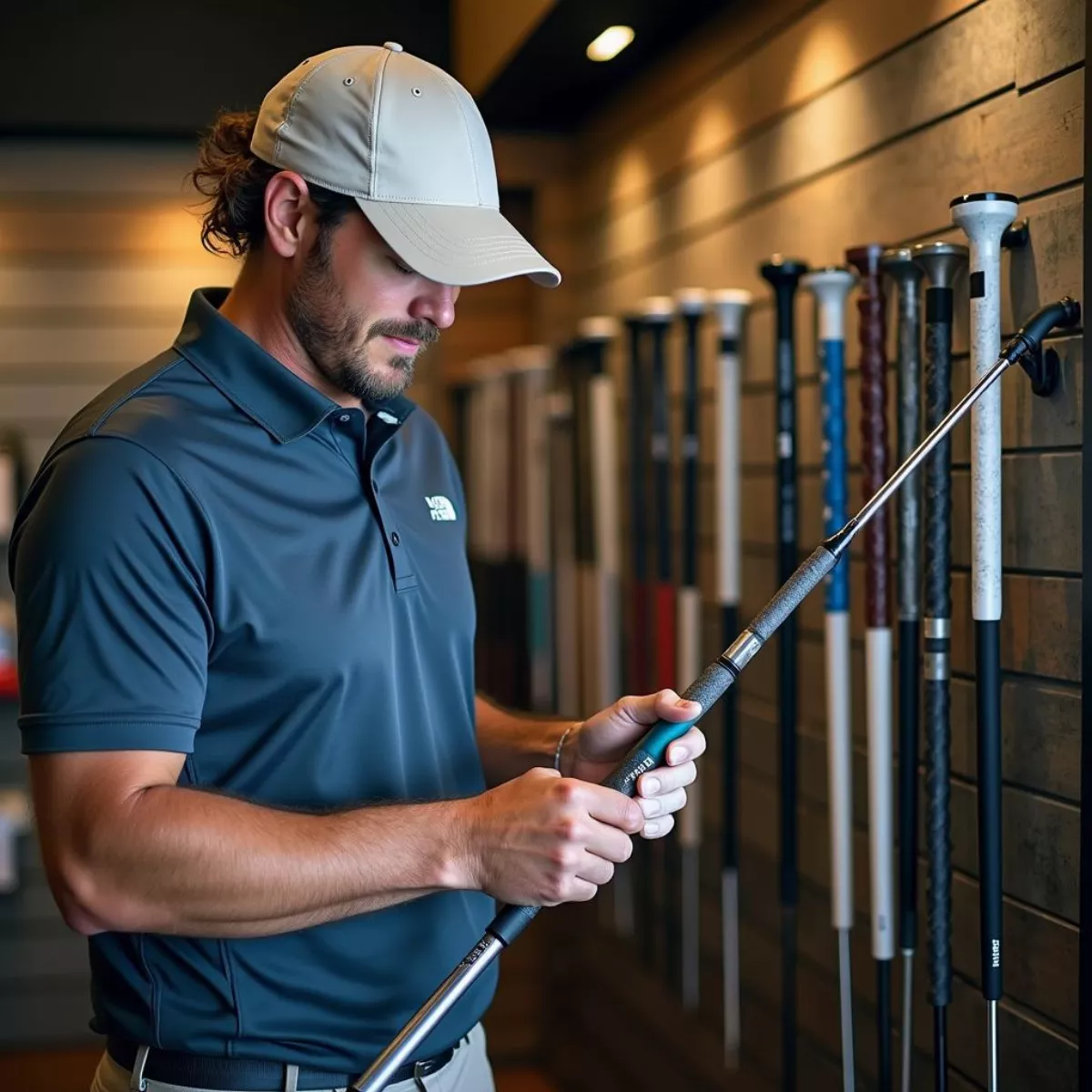Choosing the right golf grip is a crucial step in improving your overall performance on the course. While it might seem like a minor detail, the golf grip is among the most important aspects determining your swing and accuracy. In this guide, we’ll walk you through everything you need to know about selecting the perfect grip for your golf clubs.
Why the Right Golf Grip Matters
Before we dive into the nitty-gritty of how to choose a grip, let’s quickly discuss why it matters. The golf grip affects:
- Control: A proper grip ensures better control of your club, leading to improved accuracy.
- Consistency: The right feel can minimize tension in your hands and arms, promoting a smoother swing.
- Comfort: A grip that fits well can reduce fatigue and help prevent injuries over time.
Now, let’s explore how to select the best golf grip for your game.
Factors to Consider When Choosing a Golf Grip
1. Grip Size
Grip size is crucial. If the grip is too small, you’ll have a tendency to grip tightly, which can cause a loss of control. Conversely, if it’s too large, you might struggle to maintain a good feel for the club.
How to Measure Grip Size
- Standard Size: For most golfers, a standard grip works well.
- Medium Size: Generally suited for golfers with larger hands.
- Oversized: Ideal for those with very large hands or for individuals seeking added cushioning.
To find your perfect fit, measure the length from the tip of your ring finger to the second line in your palm. Use the following chart as a guideline:
| Hand Size | Grip Size |
|---|---|
| Small (<8”) | Undersize (Baby) |
| Medium (8”-9”) | Standard |
| Large (9”-10”) | Midsize |
| X-Large (>10”) | Oversized |
2. Material
The material of the grip can significantly affect your performance, feel, and durability.
- Rubber: Offers excellent flexibility and comfort, great for all-weather use.
- Corded: Provides enhanced traction but can feel rough on the hands; ideal for wet conditions.
- Polymer: Often softer, offering better shock absorption.
3. Texture
If you play in humid conditions or prefer a firmer grip, consider the texture of your grip:
- Smooth grips are comfortable but may slip in wet conditions.
- Textured grips provide better control, especially in inclement weather.
 Golf grip textures – smooth, corded, and patterned
Golf grip textures – smooth, corded, and patterned
4. Shape
The shape of your grip can impact how your hands interact with the club:
- Round grips: Good for most golfers and allow for a natural hand position.
- Flat grips: Help promote a specific wrist angle or are beneficial for players with particular swing styles.
5. Weight
The weight of your grip can influence swing mechanics. Heavy grips can stabilize your swing, while lighter grips offer more feedback and control.
6. Alignment Aids
Some grips come with alignment aids, which can be helpful for newer golfers or those struggling with alignment. Look for grips that have markings or patterns to assist in maintaining the correct hand position.
Trying Before You Buy: The Importance of Testing
While all the factors mentioned are essential, the best way to ensure you select the proper golf grip is to try them out. Many golf stores have demo grips you can test. Pay attention to how each grip feels in your hands and how it affects your swing.
Here’s a simple checklist for your fitting session:
- Feel how the grip aligns with your fingers.
- Check for comfort after a few swings.
- Note if you feel in control during your swing.
 Golfer testing grips in a golf store
Golfer testing grips in a golf store
The Installation Process
Once you’ve selected your perfect grip, it’s time to install it yourself or take it to a professional. If doing it yourself, follow these steps:
Tools Needed
- Golf grip tape
- Grip solvent
- Utility knife
- Vise with golf club attachment or clamp
Installation Steps
- Remove the Old Grip: Cut it off with a utility knife.
- Clean the Shaft: Remove any leftover tape and dirt.
- Apply Grip Tape: Wrap the grip tape around the shaft, leaving a small portion exposed at the bottom.
- Soak the New Grip: Use solvent to soak it, ensuring it slides easily onto the shaft.
- Position the Grip: Align it and push it onto the shaft.
- Let it Dry: Allow for sufficient drying time, usually overnight.
 Steps to install a golf grip
Steps to install a golf grip
Maintaining Your Golf Grips
To extend the life of your golf grips:
- Clean them regularly: Use warm, soapy water to remove debris and dirt.
- Inspect frequently: Check for wear and tear; grips should be replaced every 40 rounds or so.
- Store properly: Keep your clubs in a cool, dry place to prevent damage.
Key Takeaways
- Grip Size, Material, and Texture Matter: Choose the right size, and consider materials and textures based on your playing conditions.
- Shape Matters: Round grips fit most players, while flat grips support specific swing styles.
- Test Before You Buy: Always try grips out before purchasing.
- Proper Installation is Key: Follow steps for correct installation or seek professional help.
- Regular Maintenance is Vital: Clean regularly and replace worn grips as needed.
FAQ Section
1. How do I know what grip size I need?
Measure from the tip of your ring finger to the second line in your palm, then refer to the grip size chart above.
2. Can I use the same grip for all my clubs?
While you can, golfers often benefit from different grips tailored for specific clubs (e.g., softer grips for wedges).
3. How often should I change my golf grips?
Golf grips should be replaced approximately every 40 rounds or if they become slick or damaged.
4. What are the benefits of corded grips?
Corded grips provide enhanced traction, especially useful in wet conditions, but may feel rougher compared to smooth grips.
5. Do I really need to consider the material of the grip?
Yes! The material can impact your feel and performance, so choose based on your preferences and weather conditions.
6. How do I clean my golf grips?
Use warm water with mild soap and a cloth or brush to remove dirt and oils from your grips.
7. Are oversized grips beneficial?
Oversized grips can help prevent tension in your hands and offer more comfort but may reduce control for some golfers.
8. Can I easily install my own golf grips?
Yes, with the right tools and following installation steps, you can install grips yourself or opt for professional help.
9. What grips do the pros use?
Professional golfers often use custom grips tailored to their preferences. Grip choice varies widely among players.
10. How do I align my hands correctly on the grip?
Use grips with alignment aids, or practice feeling for the correct hand position through repetition and drills.
By considering all these factors and testing different golf grips, you’re well on your way to finding the perfect grip for elevating your game. Happy golfing!

